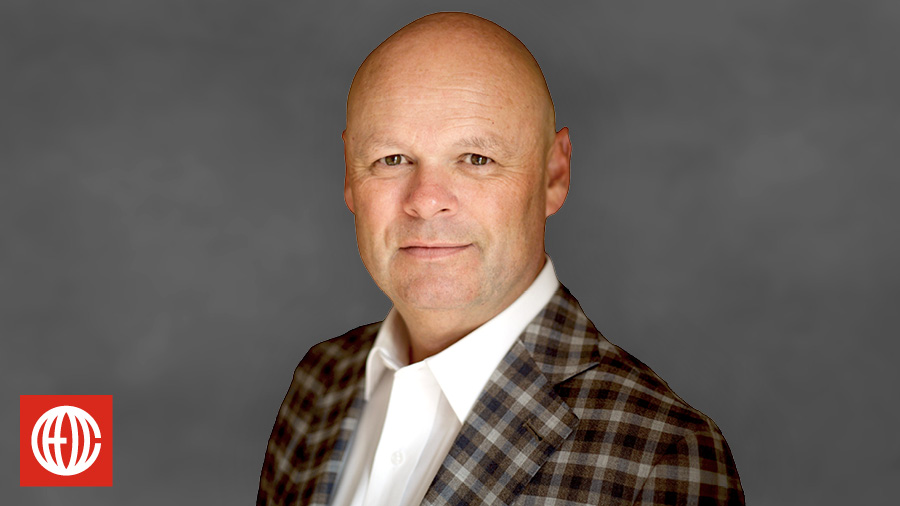
Guest: Anthony Venus, a coach at CEO Coaching International. Anthony is an experienced entrepreneur and CEO who led his latest venture-backed SaaS firm YayPay from its inception to a successful exit.
Quick Background: Why are some founders and CEOs able to repeat BIG success? Because they understand that winning a market, consistent growth, and nine-figure exits aren’t a matter of luck. Once you’ve learned how to install specific, measurable, and actionable systems, you can repeat those processes at new companies, and even in new industries.
And the best of the best, like the team at CEO Coaching International, can teach other CEOs how to do the same and Make BIG Happen.
On today’s show, Anthony Venus discusses how his leadership and strategic vision fueled YayPay’s growth and ultimate success, the importance of developing a strong company culture, and what his recent travels have taught him about the need for CEOs to lead with passion and purpose.
Tips on Growing a Company Towards a Successful Exit from Anthony Venus
1. Lead with transparency.
The AI revolution, elections, global conflicts, an up and down economy — there are plenty of things happening in the world right now that could make your employees nervous about your company’s fortunes and their own job security.
CEOs shouldn’t add to that list by throwing up a veil of secrecy between levels of an organization. When things are going well, celebrate wins in a BIG way. When things aren’t going well, don’t pretend otherwise. Employees have a way of intuiting the truth, and if there’s a disconnect between what they’re feeling and what leadership is saying, paranoia will run rampant.
One of the most powerful ways a CEO can demonstrate transparency is to be open about themselves personally as well as professionally. Anthony learned that lesson when he turned to his CEO coach for advice after receiving an unexpected diagnosis of potential cancer.
“It was a heavy time,” Anthony remembers, “and that week I wondered what to do. Should I tell the team? Should I tell the board? I picked up the phone and I called my coach at the time, Don Schiavone, and I asked him for counsel. And the first thing that Don said was, ‘You built the whole company with the key core value on radical transparency and trust.’ So he asked me to consider that. When you don’t know what to do, just refer back to culture. So I leaned back into the culture, had the conversation with the board, had the conversation with my senior team. They all stood by me and took on a lot of responsibilities off my plate for the next few months while I got better. Thank God it wasn’t cancer in the end, but I had certainly went through something for about six months. And it was just a lesson to lean into culture, lean into your team.”
2. Look deeper.
Most CEOs have heard of Toyota’s famous “5 Whys” technique for drilling down to the core issues that are slowing a company’s growth. Anthony believes that every level of a successful business has to be open to that level of scrutiny.
“Always look deeper, especially into people and strategy,” Anthony says. “Some problems are rarely what they seem to be on the surface, but many of them are often solved through looking into people and strategy. This is the rock to look under first.”
On the people side, it’s essential to fill every seat with talent that can scale along with the business. At least every quarter, CEOs should review their C-suite execs and team leaders and ask themselves, “If I was hiring someone for this position today, would I enthusiastically hire the person who is currently doing the job?” If not, ask yourself if this is a B player you can coach up to an A, or a C player who slipped through the cracks of a poor hiring process that needs revamping.
Strategically, remember that no business plan is ever really finished. Markets change. Customers change. If you don’t have dashboards and AI-powered analytics monitoring your leading KPIs, you won’t be able to pivot away from danger and towards opportunity.
“We did stall at one point at YayPay,” Anthony says, “and we dug in and tried to figure out what was going on. And the first step behind that was just look at the current customer base, analyze it, segment it, learn as much as you can about your current customer base. Why are they buying? What are their key characteristics? What are the trends in each segment in these customer groups? Analyze that. Ensure that there’s a large enough market for the segments that you’re winning in. Understand the segments you’re not winning in and why. Don’t be afraid to go back and to revisit the buyer persona and customer needs. Do 20 or 30 in-depth interviews for both buyers and users. Marketing should do that, but the CEO needs to join in for a large part of that. If you’re reviewing the strategy, you need to get your fingers dirty. Understand what customers want. Analyze competitors. Look at churn, customers you’ve lost. We did that on a number of occasions over the years, and we always came out of that much, much stronger than before. Look deeper.”
3. Conquer yourself.
After leading YayPay to its exit, Anthony took time off to tackle some bucket list travel. One destination was India, where he attended three days of teaching from the Dalai Lama and met Tibetan monk Tai Situ Rinpoche.
“Tai Situ Rinpoche is one of the most revered figures in Tibetan Buddhism,” Anthony says. “He fled Tibet 70 years ago when he was five years old, on the backs of monks, to escape the Chinese communist invasion. He founded this monastery which now houses over a thousand monks. And during my audience, I asked him, ‘Your Holiness, why are we here?’ And he smiled and said, ‘Well, that’s easy. We’re all here to conquer ourselves. For your Western ears, this means you’re here to deal with your own stuff. And when you’ve done enough of that, you’re here to help others do the same thing.’ And his words really struck me because apart from the spiritual meaning, it’s really the essential journey of every leader and every CEO.”
It’s impossible to lead other people if you’re stuck behind your own roadblocks, whether they are blind spots, bad habits, soft spots for underperforming employees, or knowledge gaps you’re just too stubborn to work on. Coaching and mentorship can help leaders accelerate their personal growth so that they lead their companies to BIG growth as well.
“Certainly having a coach made a big difference for me,” Anthony says. “Working with CEO Coaching International allowed our business to Make BIG Happen and got me to where I am today. I think the journey of being a CEO really is all about self leadership, or conquering yourself. Always be learning and always look deeper as well. Look into people, look into strategy. And last of all, don’t forget, have a lot of fun along the way.”
Top Takeaways From Anthony Venus
1. Demonstrate transparency from the top down and your employees will appreciate its cultural value.
2. Never accept an answer until you’ve dug below the surface and found the core problem or opportunity.
3. Passion, purpose, and joy are all essential to a successful CEO journey.
Links:
This Financial Plan Led to a $170 Million Exit – CEO Coaching International’s Don Schiavone explains how to fine-tune your baseline forecast to create a compounding effect that will accelerate your growth
The Top 5 Leadership Qualities of CEOs Who Have Led Their Companies to Successful Exits – A successful exit is not an end. It’s a culmination of everything that your company has accomplished so far, and of all your skills as the CEO.
About CEO Coaching International
CEO Coaching International works with CEOs and their leadership teams to achieve extraordinary results quarter after quarter, year after year. Known globally for its success in coaching growth-focused entrepreneurs to meaningful exits, CEO Coaching International has coached more than 1,000 CEOs and entrepreneurs in more than 60 countries and 45 industries. The coaches at CEO Coaching International are former CEOs, presidents, or executives who have made BIG happen. The firm’s coaches have led double-digit sales and profit growth in businesses ranging in size from startups to over $10 billion, and many are founders that have led their companies through successful eight, nine, and ten-figure exits. Companies working with CEO Coaching International for two years or more have experienced an average revenue CAGR of 31% (2.6X the U.S. average) and an average EBITDA CAGR of 52.3% (more than 5X the U.S. average).
Learn more about executive coaching | Meet our world-class coaches







